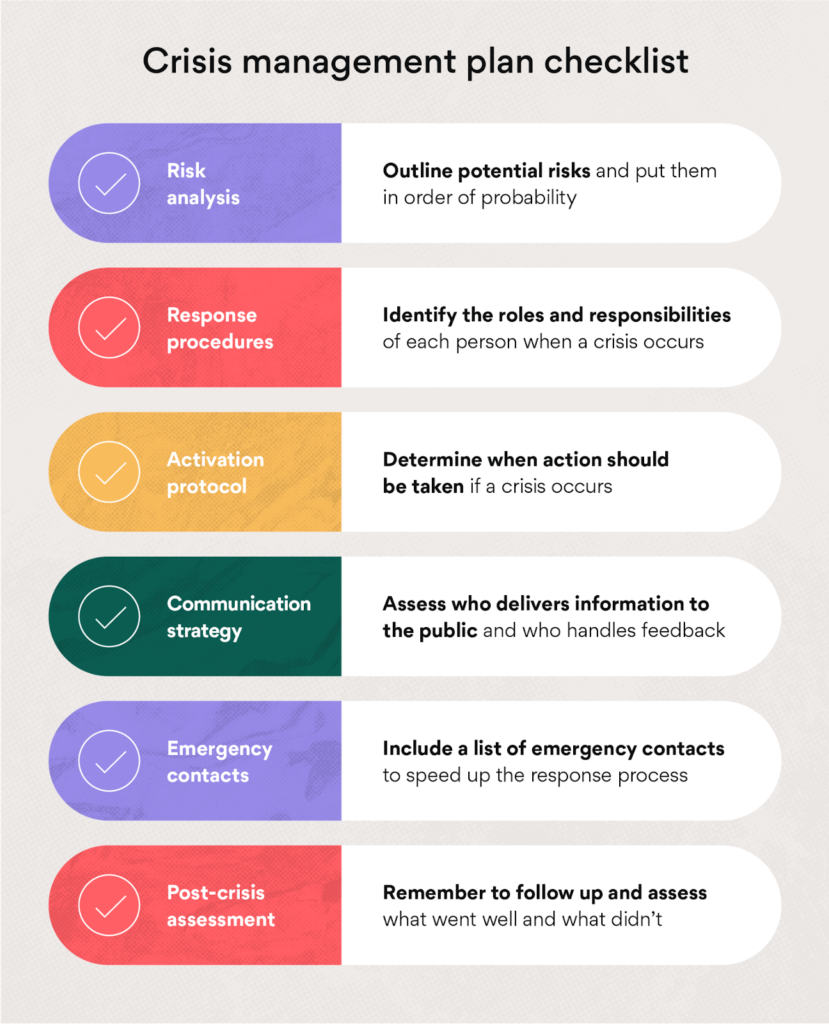Types of Internal Communication and Their Importance
Table of Contents
- Importance of Internal Communication
- Types of Internal Communications
- Key Takeaways
- Conclusion
- FAQs
Before discussing the importance of internal communication, we should first know about it. Therefore, internal communications (IC) is concerned with facilitating effective communication among employees within a company. It includes creating and distributing communications on behalf of the population and fostering communication with the organization’s constituents.
This could include announcing new policies or telling people about an upcoming tournament to performing an organization-wide involvement or cultural audit. IC is typically handled by HR, marketing, or public relations departments; however, it may be handled by any division within an organization.

Importance of Internal Communication

There are mainly seven reasons for which internal communication is important.
- Your employees are kept updated through internal communications: These keep your business up to date on future events, policy changes, engagement programs, headcount modifications, and company updates, promoting a sense of openness and transparency that individuals like. It’s all about getting the message out to anyone, hopefully in a way that brings them engaged and interested in the big picture.
- Internal communications allow people to get a better complete picture of your company: It isn’t about enthralling a receptive audience with a clever message; instead, it’s about encouraging two-way dialogue about what is going on at your company. Customers tend to feel that their opinions count, and providing a platform to express so will do wonders for participation. This is extremely good if your group’s messaging, events, and promotions are outsourced not just to your sales or HR departments but to people from several departments. The engineering team and the QA & Sales teams should be able to communicate what it is they’re focusing on. This is the applied discipline we mentioned previously.
- The communication process contributes to the development of your company’s culture: Internal communications’ primary function, in many ways, is to aid in the manifestation of your company’s culture. Your IC plan, if executed properly, can bring your corporate culture to life. It will leave your employees scratching their heads if done incorrectly. After all, each statement, communication, latest news, CEO blog post, and so on influences how your employees view your organization’s cultural landscape: just what is or, who it respects, and why its purpose is important. Internal communications include the following components. Your corporate culture is a collection of its parts.
- Your employees will be more engaged if you communicate with them internally: One of the key aims of your internal information plan should be to create a two-way interaction. It’s the distinction between ineffective upper communication (like bulk emails that go unread) and meaningful, interactive interactions that encourage participation. Workers who believe their opinions count and their thoughts are valuable are more inclined to go far beyond when your business requires them. And the importance of that cannot be overstated.
- Internal messaging can help keep individuals calm in times of crisis: Business suffers from time to time, teams are forced to restructure, and mergers and acquisitions occur. People require internal communication the most at this time. Because the organization’s morale and business continuity are on the line, announcements of anticipated structural changes should be handled with caution. Transparency regarding what happened, who was affected, how they were treated, and what this means for the business, especially in the case of layoffs, necessitates a gentle tone and complete transparency. People will have questions, and the way you respond to those inquiries will stick with them for a long time.
- Internal communication gives your company a new perspective: Many people find their professions monotonous. They arrive at work, chat with a coworker or two, attend meetings, complete their work, and then rush out the door. And for a lot of individuals, that’s completely OK. That type of work style, on the other hand, is unsatisfying for individuals who want to be more involved in their company and play a more active role in the formation of its culture. This is where effective internal communication comes into play. It promotes learning and speaking events, leadership training programs, customer feedback, and media attention and gives people the opportunity to get more involved if they want to.
- Internal communication allows for criticism, debate, and conversation: Communications strategy must allow for criticism, pushback, and public discussion of topics and ideas to promote clear dialogue at your firm. This is how collaboration takes place, and it isn’t always pretty. Internal communications can be used to open a conduit for these difficult conversations. Staff polls, a link to an internal discussion site, an activity announcement to promote input and complaints, or even an org-wide invitation to publicly debate a specific aim or project are all examples of how this might happen.
Types of Internal Communications
There are mainly seven types of internal communication channels or strategies.

1. Leadership generation
This is the sharing of data from the top to down, from executives to front-line employees. The conventional form of internal communication, often known as “downward communication,” is frequently seen as the essential duty of internal communications.
2. Employee generation
All communications from workers to managers and those higher up in the corporate structure are included in this category. This sort of internal communication, known as “upward communication,” is often neglected among the several types of internal communication.
3. Peer-to-peer change management
It’s critical to link employees with one another and organize communications between employees and management. Conversations between employees, often known as ‘lateral communication,’ must be actively promoted and enabled to be productive.
4. Change in administration
Transformation is famously complex for firms to navigate, and it frequently results in employee fear and resistance. Change communication is critical to a company’s overall success and will influence whether it succeeds or fails during the transformation process.
5. Communication about culture
It’s ethereal yet incredibly powerful. Everything from attracting and retaining employees to brand positioning, business stability, and financial performance is influenced by company culture. And, of course, the level of employee involvement.
6. Management of a crisis
Crisis management takes center stage when firms are confronted with major disruptions and unforeseen problems. In a crisis, how you handle communication might mean the difference between making or breaking a company. This sort of company communication, more than any other, requires its own part in your internal communication strategy.

7. Information distribution
One of the most important internal communication best practices is information delivery. The internal communications department’s job is to ensure that every employee is up to date on all organizational, legal, and procedural matters.
The main objective of internal communication in a business organization is to ensure a seamless flow of information across divisions and coworkers within a business. This really is true at both top and bottom of the command chain. It also works in the workplace amongst workers who engage with one another.
Key Takeaways
- Internal communication has a bright future ahead of it: Internal communicators should be proud of what they’ve accomplished in the last year. Now is the opportunity to capitalize on the enthusiasm and show business leaders how IC can help them succeed.
- Put money into the correct digital tools: Technology has undeniably been the lynchpin of internal communications over the last year, but it’s critical to invest in the proper infrastructure for your company. It’s not enough to have a video conferencing platform; you also need to consider correctly connecting your employees and making them feel appreciated and visible.
- Be genuine in your tone: Communication has only grown in importance in the last year, but the way we communicate in the workplace has changed. Ironically, video conferencing techniques have allowed us to break through communication boundaries and become closer and more empathic with one another, allowing us to practically glimpse into each other’s homes and blurring the lines between professional and personal life. As a result, leaders’ tone when speaking to staff must be changed to accommodate this.
- Make a digital new strategy: Technology made the rapid transition to remote working easier by technology, which served as a bridge to keep everyone connected and online. Knowing how to make the most of these digital tools is now essential for internal communicators who want to prepare ahead.
- Demonstrate your value to decision-makers: Now that the necessity of IC has been highlighted, it’s critical to demonstrate the impact and value it provides to both the firm and its people. Business executives are paying attention, and IC teams must speak up and demonstrate their importance.
- Give your staff a voice as culture is key: Another topic that has gained much traction and importance in the last year is company culture. When teams are dispersed, it’s challenging to maintain a healthy and happy culture. This is where IC can assist you. IC can help bridge the gap between employees and leadership teams by providing everyone a voice and assisting in developing a culture that suits everyone in the company.
Conclusion
From the above content, we conclude that there are various reasons why excellent internal communications are essential for a healthy and motivated workplace. It’s a terrific place to start when it comes to more results in creating your communication, and it goes into great depth about how to change best messaging into a two-way of interaction.
Internal communication leads to more engaged employees and, as a result, better workplaces. Employee commitment is increased when communication is offered to employees in the same way it is marketed to library users. On the other hand, internal communication should not be regarded as a one-way street. Internal communication can improve employee satisfaction, safety, revenues, productivity, and turnover. Internal communication is divided into downward, upward, and horizontal. It is possible to be more encouraged and better organized when getting downward communication.
Managers must be conversant with all available communication channels and select the most appropriate channel for each issue. Although electronic payments may appear to be better than the traditional ways, the ideal approach may be determined by the particular message to be transmitted. However, remember that using different communication channels is perhaps the best option.
Each briefing, those briefings, and instructive brown bag lunches are examples of in-person/traditional methods of communication. Intranets, email, wikis, and blogs are examples of electronic approaches. Managers can communicate with a large number of individuals by using different channels. It is good for all managers to assess their existing communication strategies and ensure that they communicate with staff in even the most efficient manner possible.
FAQs
Internal communications (IC) is the function in charge of ensuring effective communication among employees within a company. Internal communication refers to a set of practices that ensure that information is circulated effectively and that people in an organization collaborate effectively.
Internal communication is important not just for the health of your organization but also for the financial line. It’s not as easy as repurposing existing customer interactions or sending out a few company-wide emails. From the beginning, you must be strategic and consistent.
• Assess internal communication
• Establish goals and objectives
• Determine the target audience
• Select the appropriate communication tool
• Craft the appropriate message
• Deliver the communication
• Schedule communication
• Provide a staff advocacy tool
• Identify the ambassador, and
• Evaluate the plan.
To reach and engage their staff, most companies use digital communication platforms. Indeed, these communication channels are regarded as the most effective forms of communication in the workplace. There are mainly 12 communication channels.
– Intranet
– Emails
– Project management tools
– Employee newsletters
– Private messaging software
– Document sharing software
– Video conferencing software
– Internal podcasts
– Internal company blogs
– Employee feedback software
– Internal social media, and
– Employee survey solution
Video clips and voice messaging are two instances of internal communication that make the most out of leadership. While documentation of any changes in direction and process is important, people need a familiar figure and listen to a particular sound to feel more at ease.
Internal communication contributes to the development of your company’s culture. Internal communications’ primary function, in many ways, is to aid in the manifestation of your company’s culture. Your IC plan, if executed properly, will bring your workplace culture to life. It will leave your employees scratching their heads if done incorrectly.
Latest Blogs
In this blog, explore the golden rules of using AI marketing tools so you can leverage the benefits to their maximum potential.
In this blog, you’ll learn how to avoid the pitfalls of SEO over-optimization while enhancing your site’s performance.
In this article, we’ll take a look at what AMP is, its advantages and disadvantages, and how it affects SEO.
Get your hands on the latest news!
Similar Posts

Content
9 mins read
Content Marketing vs Advertising – Which One is More Effective?

Content
11 mins read
Interactive Content vs. Static Content: Which is More Effective?

Content
6 mins read